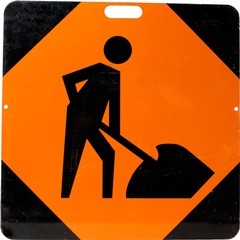 The Indiana Chamber has been a key advocate for Indiana’s Management and Performance Hub (MPH) by recently supporting legislation to codify and fund it so it can achieve more.
The Indiana Chamber has been a key advocate for Indiana’s Management and Performance Hub (MPH) by recently supporting legislation to codify and fund it so it can achieve more.
MPH is a data hub that can link and aggregate state agency datasets with other data to help improve the performance and outcomes on many issues, including education/workforce, the opioid crisis and traffic safety. Think of it as a depot, where data can be assembled and studied to further outcomes and make better data-driven decisions.
Beyond improving state government performance and enhancing transparency, there is the ability to provide useful information to external partners including researchers, the business community and not-for-profit organizations. There will be an external-facing component of MPH to determine protocol on how this information can be utilized for maximum benefit.
The Indiana Chamber is a member of an advisory group to review guidelines and policies being established by MPH. We are also part of the Indiana Open Data Council to provide advice and guidance as MPH evolves; this includes the state and researcher and community advisors to help further MPH’s goals, scale innovation and increase utilization of the MPH.
For more information about the latest with the MPH, read its newsletter.

 Reference checking is often viewed as a routine matter. But not for the company or the job seeker when certain information is shared.
Reference checking is often viewed as a routine matter. But not for the company or the job seeker when certain information is shared. The ripple effects of large-scale job losses linger for years and can keep adolescents from attending college later in life, according to new research carrying significant ramifications for policy makers, college recruiters and counselors.
The ripple effects of large-scale job losses linger for years and can keep adolescents from attending college later in life, according to new research carrying significant ramifications for policy makers, college recruiters and counselors.
 The independent workforce continues to grow and mature, even as the economy continues to rebound and the unemployment rate declines, according to MBO Partners, the nation’s largest provider of business services and tools to the self-employed and companies that engage them. The company released its 2017 State of Independence in America report, the country’s longest-running end-to-end survey of the American independent workforce.
The independent workforce continues to grow and mature, even as the economy continues to rebound and the unemployment rate declines, according to MBO Partners, the nation’s largest provider of business services and tools to the self-employed and companies that engage them. The company released its 2017 State of Independence in America report, the country’s longest-running end-to-end survey of the American independent workforce. Before posting pictures of your late-night revelry or complaints about your job on social media, think again – 70% of employers use social media to screen candidates before hiring, up significantly from 60% last year and 11% in 2006.
Before posting pictures of your late-night revelry or complaints about your job on social media, think again – 70% of employers use social media to screen candidates before hiring, up significantly from 60% last year and 11% in 2006.

 In late April, Purdue University partnered with the Indiana Chamber, Indiana INTERNnet and others to present a brain drain/gain workshop as part of the Chamber’s 53rd Annual Human Resources Conference. Panel discussions, presentations and more on the talent/skills gap were compiled into a comprehensive report. Read the
In late April, Purdue University partnered with the Indiana Chamber, Indiana INTERNnet and others to present a brain drain/gain workshop as part of the Chamber’s 53rd Annual Human Resources Conference. Panel discussions, presentations and more on the talent/skills gap were compiled into a comprehensive report. Read the  While Indiana’s unemployment dipped to 3.6% last month, Utah is a full half point lower.
While Indiana’s unemployment dipped to 3.6% last month, Utah is a full half point lower.